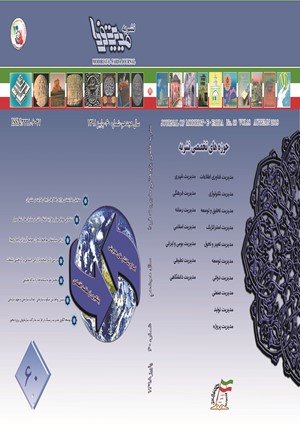بهینه سازی سرمایه گذاری در بیمه های عمر مبتنی بر برنامه ریزی آرمانی
محورهای موضوعی :سیدفرهنگ حسینی 1 , رضا راعی 2 , غدیر مهدوی کلیشمی 3
1 - دانشگاه تهران
2 - دانشگاه تهران
3 - دانشگاه علامه طباطباپی
کلید واژه: بهینه سازی بیمه عمر برنامه ریزی آرمانی بیمه عمر مدلسازی سرمایه گذاری,
چکیده مقاله :
مدیریت سرمایه گذاری در بیمه های عمر به دلیل ویژگی های خاص آن، از اهمیت بالایی برخوردار است. بیمه عمر بر خلاف سایر بیمه نامه ها بلندمدت بوده و عمدتا متمرکز بر بازده سرمایه گذاری است. همچنین به دلیل مشارکت بیمه گذاران 85% در مازاد منافع، وقوع مازاد در یک دوره به نفع بیمه گذار بوده و عایدی چندانی برای شرکت بیمه ندارد و در مقابل وقوع کسری در بازده تضمین شده بر عهده شرکت بیمه است. علاوه بر این کسب بازده بالا از عوامل اصلی رقابت شرکت های بیمه در بازاریابی است. علاوه بر این، شرکت های بیمه بایستی مطمئن باشند که نقدینگی کافی برای ایفا تعهدات پرداخت خسارت خود را دارا هستند. با وجود این تفاوت های اساسی بین بیمه عمر و بیمه های اموال و مسئولیت ، اما آیین نامه 60 بیمه مرکزی تفاوتی بین سرمایه گذاری ذخایر بیمه نامه های فوق قائل نیست. در این تحقیق به طراحی مدل بهینه سازی پرتفوی سرمایه گذاری در بیمه های عمر پرداخته شده است. براین اساس، مدل سرمایه گذاری مارکوف سوییچنگ خود رگرسیون بردار مبتنی بر بهینه سازی آرمانی با اهداف متضاد تعیین شده با عملکرد واقعی شرکت مقایسه گردیده است. بهینه سازی در پرتفوی سرمایه گذاری مبتنی بر بیمه عمر شرکت بیمه معلم در دوره 1391 تا 1395 صورت گرفته است. اوزان سرمایه گذاری با شبیه سازی مدل طراحی شده مارکوف سویچینگ خود رگرسیون بردار با بهینه سازی اهداف شامل حداکثر سازی بازده شرکت، کمینه سازی کمبود احتمالی بازده، حداکثرسازی بازده بیمه گذاران و کمینه سازی کمبود نقدینگی اجرا شده است. براساس نتایج حاصله، مدل بهینه سازی برنامه ریزی آرمانی بازده بیشتری در مقایسه با بازده واقعی عاید شرکت می سازد و در سایر اهداف نیز عملکرد بهینه تری دارد. در نتیجه این روش می تواند در بهینه سازی پرتفوی سرمایه گذاری بیمه عمر در شرکت های بیمه بکار رود.
Investment management in life insurance is very important because of its specific features. Unlike other insurance policies, life insurance is long-term and focused mainly on return on investment. Also, due to the 85% participation of insurers in the surplus of interest, the surplus in a period has little income for the insurance company,but the insurance company has a guaranteed return on the deficit. In addition, high return is one of the main factors of insurance companies competition in marketing. Also, insurance companies need to make sure they have enough liquidity to fulfill their obligations. Despite the fundamental differences between life insurance and property and liability insurance, No 60 Central Insurance Regulations do not differentiate between the investment of the above insurance reserves. In this study, we designed a portfolio optimization model for life insurance investments. Accordingly, the Markov Switching Vector Auto Regressive based on ideal optimization with contrasting goals set with the actual performance of the company. Optimization has been made in the portfolio of life insurance based on Moalem Insurance Company from 2012 to 2016. Investment weights have been implemented by simulating the Markov Switching VAR model with optimization objectives including maximizing insurance returns, minimizing shortfall, maximizing policyholder returns and minimizing liquidity shortages. Based on the results, the ideal planning optimization model produces more returns than the actual returns of the insurance and performs better in other objectives. As a result, this approach can be used to optimize life insurance investment portfolios in insurance companies.
Bohnert, A., Gatzert, N. and Jørgensen, P.L., 2015. On the management of life insurance company risk by strategic choice of product mix, investment strategy and surplus appropriation schemes. Insurance: Mathematics and Economics, 60, pp.83-97.
Gülpınar, N., Pachamanova, D., & Çanakoğlu, E. (2016). A robust asset–liability management framework for investment products with guarantees. OR Spectrum, 38(4), 1007-1041.
Hamilton, J. D. (2016). Regime switching models. The new palgrave dictionary of economics, 1-7.
Heidari, H., & Neshatizadeh, L. (2018). Stock Portfolio-Optimization Model by Mean-Semi-Variance Approach Using of Firefly Algorithm and Imperialist Competitive Algorithm. International Journal of Business and Development Studies, 10(1), 115-143.
Hopkin, P. (2018). Fundamentals of risk management: understanding, evaluating and implementing effective risk management. Kogan Page Publishers.
Koijen, R.S. and Yogo, M., 2017. Risk of life insurers: Recent trends and transmission mechanisms (No. w23365). National Bureau of Economic Research.
Li, Y., 2010. Asset liability management in a life insurance company (Doctoral dissertation).
Liu, B., & Chen, X. (2015). Uncertain multiobjective programming and uncertain goal programming. Journal of Uncertainty Analysis and Applications, 3(1), 10.
Simsek, K. D. (2013). Introduction to Stochastic Programming and Its Applications to Finance. Handbook of Finance.
Ziemba, W. T. (2016). An Approach to Financial Planning of Retirement Pensions with Scenario-Dependent Correlation Matrixes and Convex Risk Measures. The Journal of Retirement, 4(1), 99-111.
Zelizer, V. A. R. (2017). Morals and markets: The development of life insurance in the United States. Columbia University Press.


